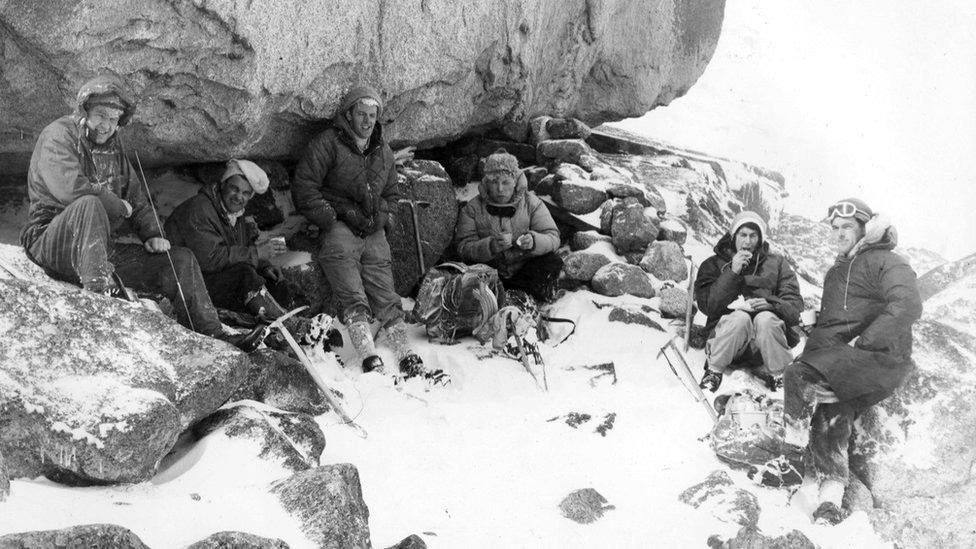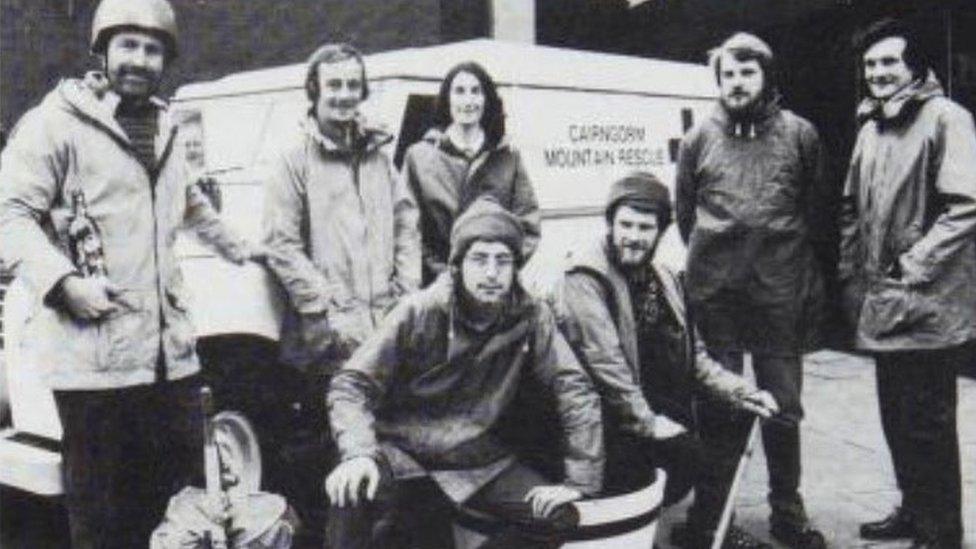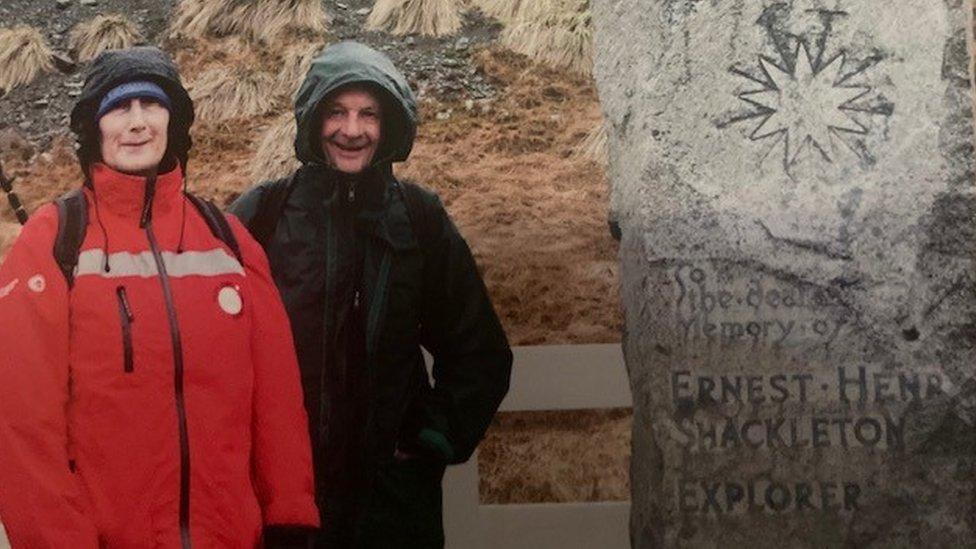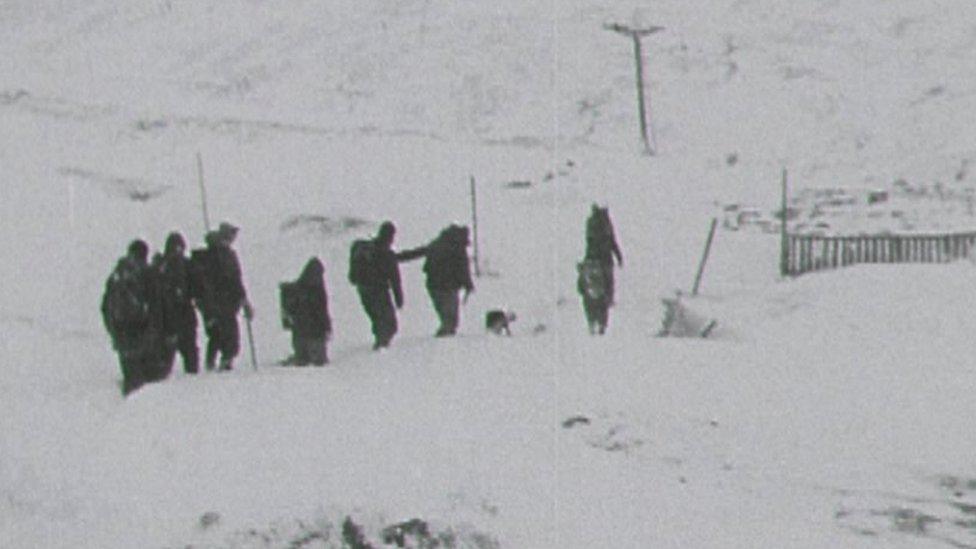The woman who blazed a trail in mountain rescue
- Published

Mollie Porter says the Cairngorms were her life
Mollie Porter's first experience of hillwalking was an exposed scramble in Glencoe which left her terrified and vowing she would never go up a mountain again.
But she quickly overcame her fears and for the next seven decades her life revolved around living and working in the mountains of the Cairngorms.
The 85-year-old made history in 1972 when she became leader of the Cairngorm Mountain Rescue Team - the first woman to take charge of a mountain rescue team in Scotland and it is believed in the UK as a whole.
And despite the passage of more than 50 years, very few women have followed in her footsteps.
Her expertise in the hills saw her break into areas of mountaineering that were exclusively male.
She worked as an instructor at Glenmore Lodge (the National Outdoor Training Centre) near Aviemore and was one of the first women on the British Antarctic Survey - which is responsible for most of the UK's scientific research in Antarctica.
Mollie was called out to hundreds of searches over her 18 years in the mountain rescue team but one of the worst was the Cairngorm Plateau Disaster of November 1971.
Five teenage children from Edinburgh and their 18-year-old guide froze to death after getting caught in a snowstorm in dwindling daylight.

Mollie on a training day with Cairngorm Mountain Rescue
Mollie still clearly recalls the tragedy.
"For them to die was shocking, it was the worst thing that could ever have happened," she says.
In the aftermath the team felt the "horror of it, the despair of wanting to find the people safe".
A fatal accident inquiry was held in February 1972 and it called for the establishment of a better training and certificate regime for instructors.
Mollie says the disaster acted as an "awakening" about the dangers of being in Scotland's mountains in the winter when the weather can change quickly.
In stark contrast there was "such joy to be able to actually go out on a rescue and bring the people down alive".

A search party at Shelter Stone Crag (Mollie to the right sitting with a white hat)
Mollie grew up far from the Highlands in the southern English county of Hertfordshire.
Her passion for the mountains was sealed as a 16-year-old on a family walking holiday when she first set eyes on Ben Nevis and was "besotted."
Young Mollie returned home and went to her local library, taking out "Mountaineering in Scotland" by WH Murray - a book revered as a mountaineering classic.
She pored over the stories of summer and winter climbing and wrote to WH Murray, more commonly known as Bill Murray, who invited her to go climbing in Scotland.

Mollie Porter (back, middle) with the Cairngorm team in 1974 when they were presented with a new Land Rover
The then 17-year-old hitchhiked about 450 miles from Stevenage to Glencoe and the following day the pair roped up and he led the young novice up Curved Ridge on Buachaille Etive Mor - an exposed scrambling route.
To her horror after reaching the summit he coiled up the rope and set off back down leaving a terrified Mollie to retrace her steps down alone.
"I swore when I got to the foot of it, then that was it for me. I was too scared," she says.
In the intervening years Mollie trained as a Geography Teacher at college in London but it was the Cairngorms where she would settle with her husband Jo in 1961.
Her love of the mountains saw her become an Outdoor Instructor, and she would later work for RSPB Scotland and as a Ranger for Highland Council.

Mollie and her late husband Jo at the grave of Sir Ernest Shackleton in South Georgia
With her late husband there were regular mountaineering trips all over the world: the Andes, Canada, Greenland, Yosemite, Svalbard to name just a few.
Her level of fitness and ability on the hill was admired by her fellow Cairngorm Mountain Rescue Team members, with some saying they would struggle to keep up with her.
Mountaineering is historically the preserve of men but Mollie said she never encountered sexism.
She says she preferred to work with men, as they shared her passion for mountaineering, and "they don't chatter on".
Despite her many years of experience, Mollie wasn't immune to the dangers of Scotland's mountains.
Caught in avalanche
Hillwalking with a small group one winter she was swept 900ft (274m) down a mountain after being caught up in a slab avalanche.
As she tumbled down the slope she thought "this is it, this is how I am going to die".
With her years of knowledge gained from mountain rescues she had the foresight to throw her ice axe away, "so I made sure I didn't have an appendix removed".
The corrie below was littered with large blocks of snow 30ft (9m) deep which partially buried Mollie.
She managed to get herself out and "shaking like a leaf" surveyed the avalanche which she says was about a third of a mile long and one of the biggest ever recorded in the Cairngorms.
However, the ordeal left her relatively unscathed with just bad bruising.
Looking back, on the 60th anniversary year of the Cairngorm Mountain Rescue Team, she says the stand-out moments were "everything, everything really, the team, I loved the team" .
Reflecting on what the Cairngorms meant to her Mollie becomes tearful, saying "everything, my life, everything".
Hear more of Mollie's story on BBC Radio Good Morning Scotland on BBC Sounds.
Related topics
- Published20 November 2021
